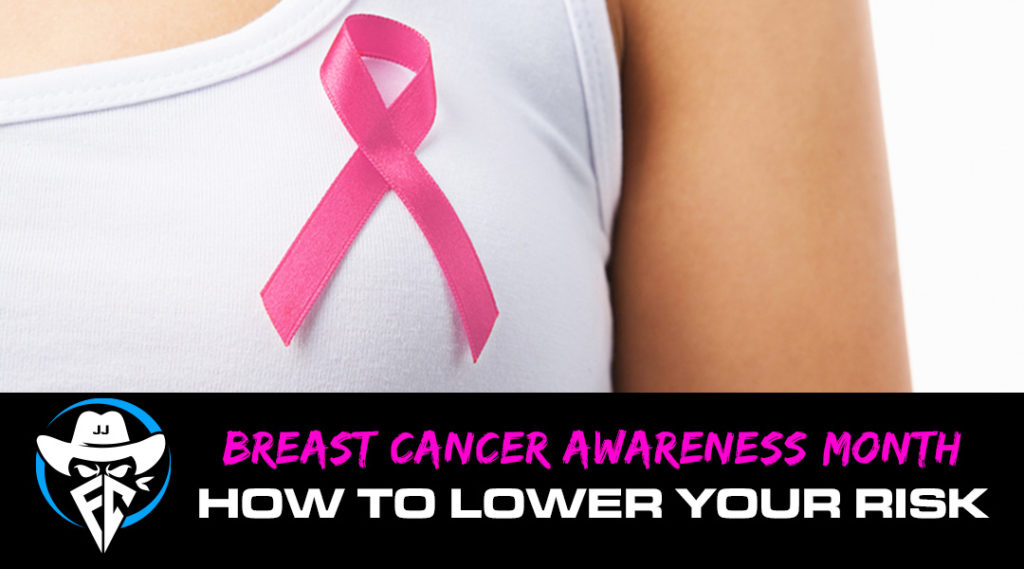FITNESS
FOCUS
At Outlaw FitCamp, we’d like to put a spotlight on Breast Cancer Awareness Month. Some staggering statistics about breast cancer:
- 1 in 8 women will receive a breast cancer diagnosis in their lives
- As of 2021, breast cancer became the most common cancer diagnosis around the world
- According to the World Health Organization, it accounts for 12 percent of all new cancer cases each year
- Over 43,000 women are expected to die from breast cancer in the U.S. in 2022
- Breast cancer death rates are higher in the U.S. than for any other cancer, besides lung cancer
There is some good news though: the overall death rate from breast cancer has decreased by 1 percent each year since 2013. This improvement is likely due to treatment advances and earlier detection through screening.
Adding to the good news, there are some actions you can take to help reduce your risk of breast cancer (and lower the chances of recurrence if you’ve already battled it). Most importantly, The American Cancer Society reports that many studies conducted over the past 20 years consistently show an increase in physical activity is linked to lower breast cancer risk.
Exercise can help you ward off several cancers, including breast cancer
The Susan G. Komen Foundation reports that women who exercise regularly have a 10 to 20 percent lower risk of breast cancer than women who are not active. This benefit is especially clear in postmenopausal women. And the MD Anderson Cancer Center agrees. They report that maintaining a healthy weight reduces your risk for many types of cancer, including breast cancer.
Researchers are still debating why the link between a healthy weight and lower risk of breast cancer is so strong. They believe it could be a combination of several factors:
- Inflammation
Excess weight causes visceral fat which surrounds your organs. When organs are surrounded by fat, it causes inflammation which make cells multiply. The more cells multiply, the more likely there will be bad cells which grow and cause cancer.
- Hormonal changes
Fat cells make estrogen, which also causes cells to multiply more quickly. Women will lower rates of estrogen have a lower risk of breast cancer than women with higher levels.
- Insulin resistance
The inflammation caused by visceral fat can also stop your body from responding to insulin, the hormone that regulates blood sugar. When you become insulin resistant, that also causes your cells to multiply more quickly.
- Immune system boost
Exercise boosts your body’s immune system, and this can help kill or slow the growth of cancer cells.
How much exercise is enough to help with cancer risk?
The American Cancer Society recommends getting 150-300 minutes (2.5 to 3 hours) of moderate physical activity a week, or 75 to 100 minutes (1 to 2 hours) of vigorous activity per week. This amount of activity has been shown to reduce your risk of cancer.
Evidence is also emerging that sitting a lot increases the likelihood of developing breast cancer. So try to get and up and move every hour throughout your day if you are working at a desk.
If you’ve had breast cancer, exercise has a strong effect on recurrence and mortality
Exercise can the lower risk of first-time breast cancer diagnosis with an impressive figure of 10 to 20 percent. But the effect of exercise on recurrence of breast cancer is even greater. A review of 67 different studies by the Canadian Medical Association shows that regular exercise reduces breast cancer recurrence and mortality by a whopping 40 percent.
What else can I do to reduce my risk of breast cancer?
There are other actions you can take to reduce your risk of breast cancer. We’re sharing this advice from a well-respected authority on breast cancer, The Susan G. Komen Foundation. These recommendations are taken from their website where you can also find further information https://www.komen.org/breast-cancer/screening/self-awareness/
- Know your risk
- Talk to both sides of your family to learn about your family health history
- Talk to a doctor about your risk of breast cancer
- Get screened
- Talk with a doctor about which screening tests are right for you if you are at higher risk
- Have a mammogram every year starting at age 40 if you are at average risk
- Have a clinical breast exam at least every 3 years starting at age 20, and every year starting at age 40
- Know what is normal for you
See a doctor if you notice any of these breast changes:
- Lump, hard knot or thickening inside the breast or underarm area
- Swelling, warmth, redness or darkening of the breast
- Change in the size or shape of the breast
- Dimpling or puckering of the skin
- Itchy, scaly sore or rash on the nipple
- Pulling in of your nipple or other parts of the breast
- Nipple discharge that starts suddenly
- New pain in one spot that doesn’t go away
To see illustrations of these warnings signs, please visit the breast cancer Warning Signs & Symptoms page.
- Make healthy lifestyle choices
- Maintain a healthy weight
- Make exercise part of your routine
- Limit alcohol intake
- Limit menopausal hormone use
- Breastfeed, if you can
Exercise and maintaining a healthy weight are your best defenses against breast cancer
Unfortunately, there is no magical shield to protect you from ever getting a dreaded breast cancer diagnosis. But exercise and maintaining a healthy weight will lower your risk. Maintain a healthy weight, eat well, exercise regularly, and get your mammogram as often as you should!
Our thoughts and prayers are with anyone who is touched by breast cancer, either personally or through a loved one. Let’s do everything we can to lower our risks for this disease while they continue to improve screening and treatments.
TRY OUTLAW
Grab Your Free Pass

